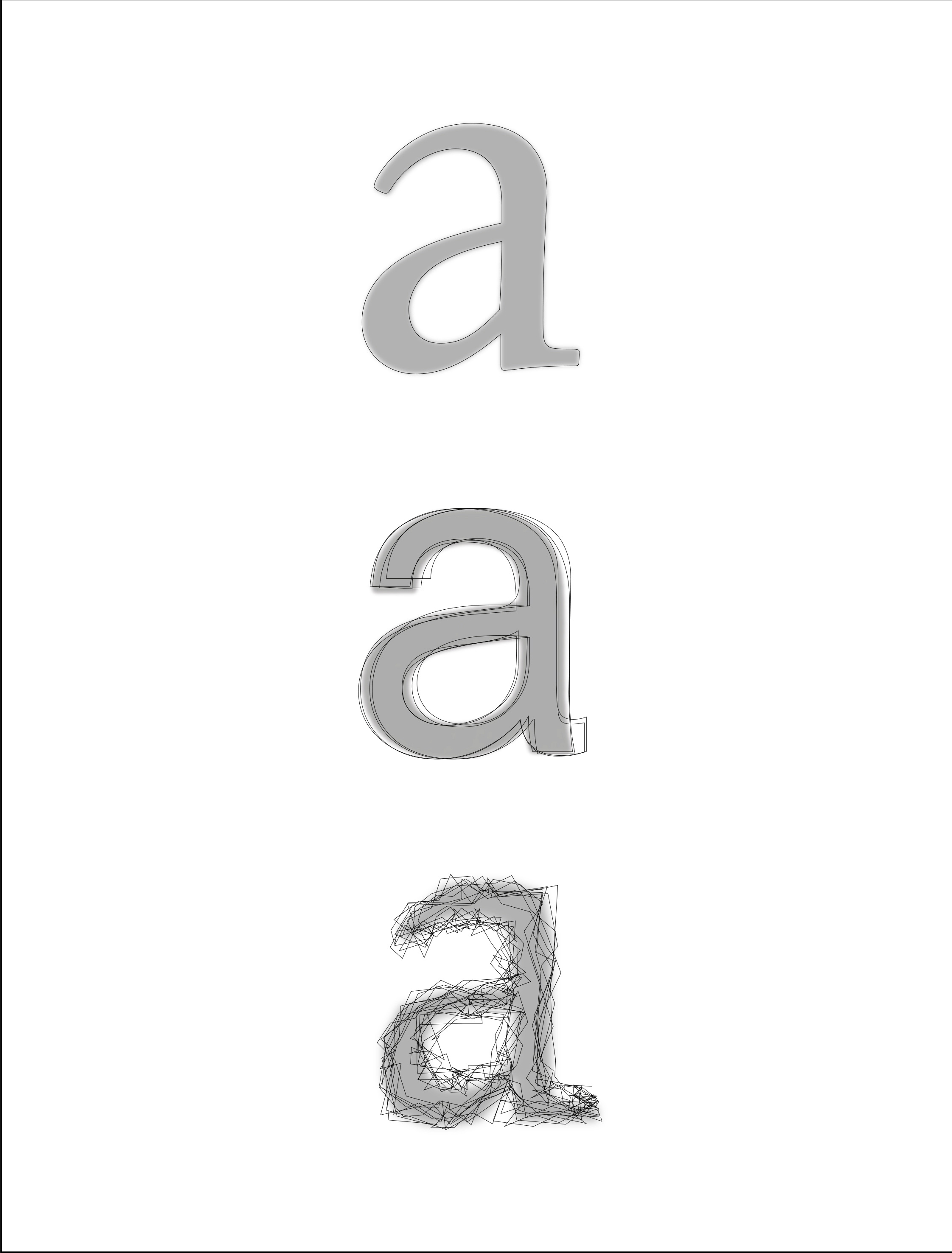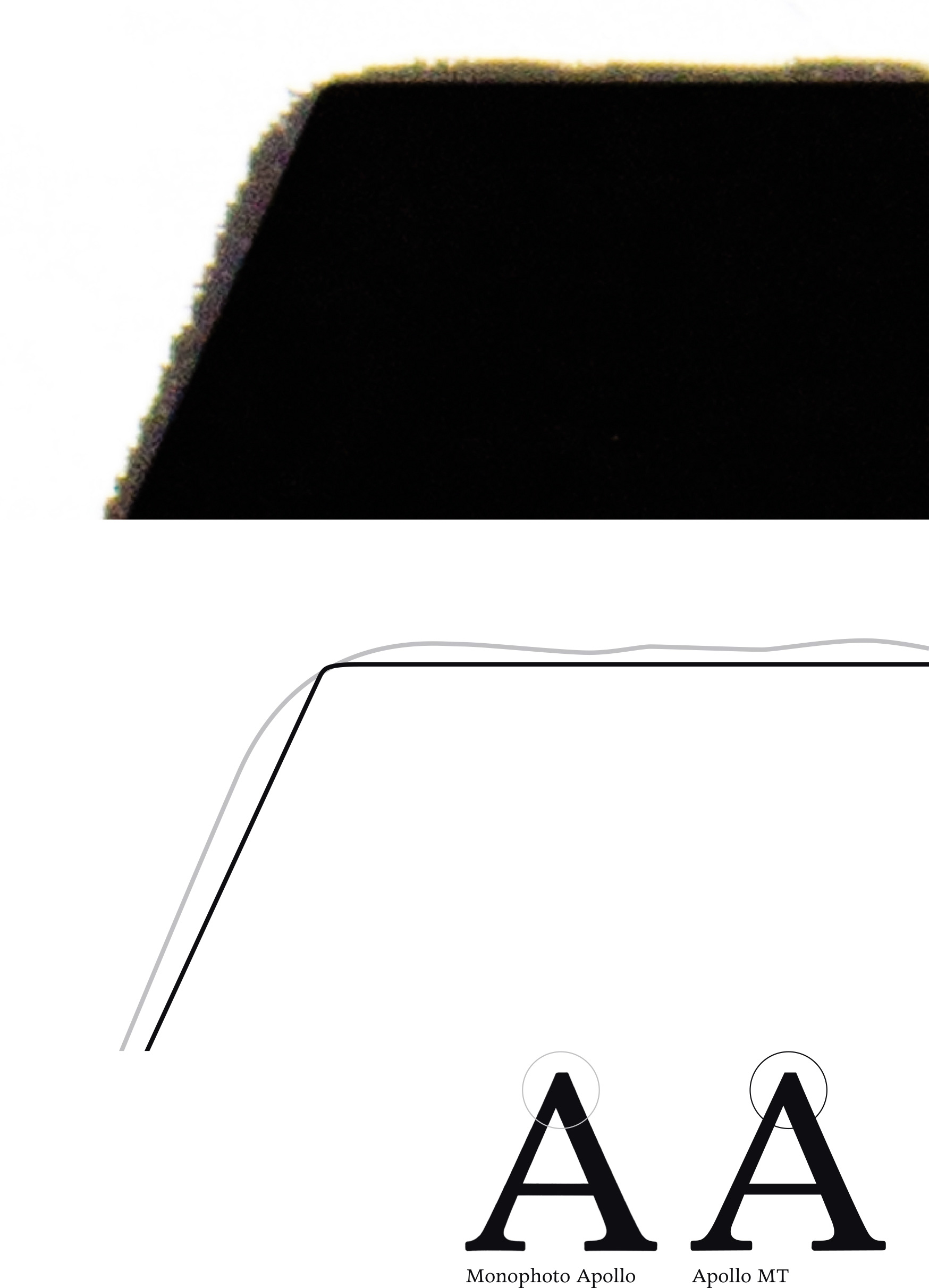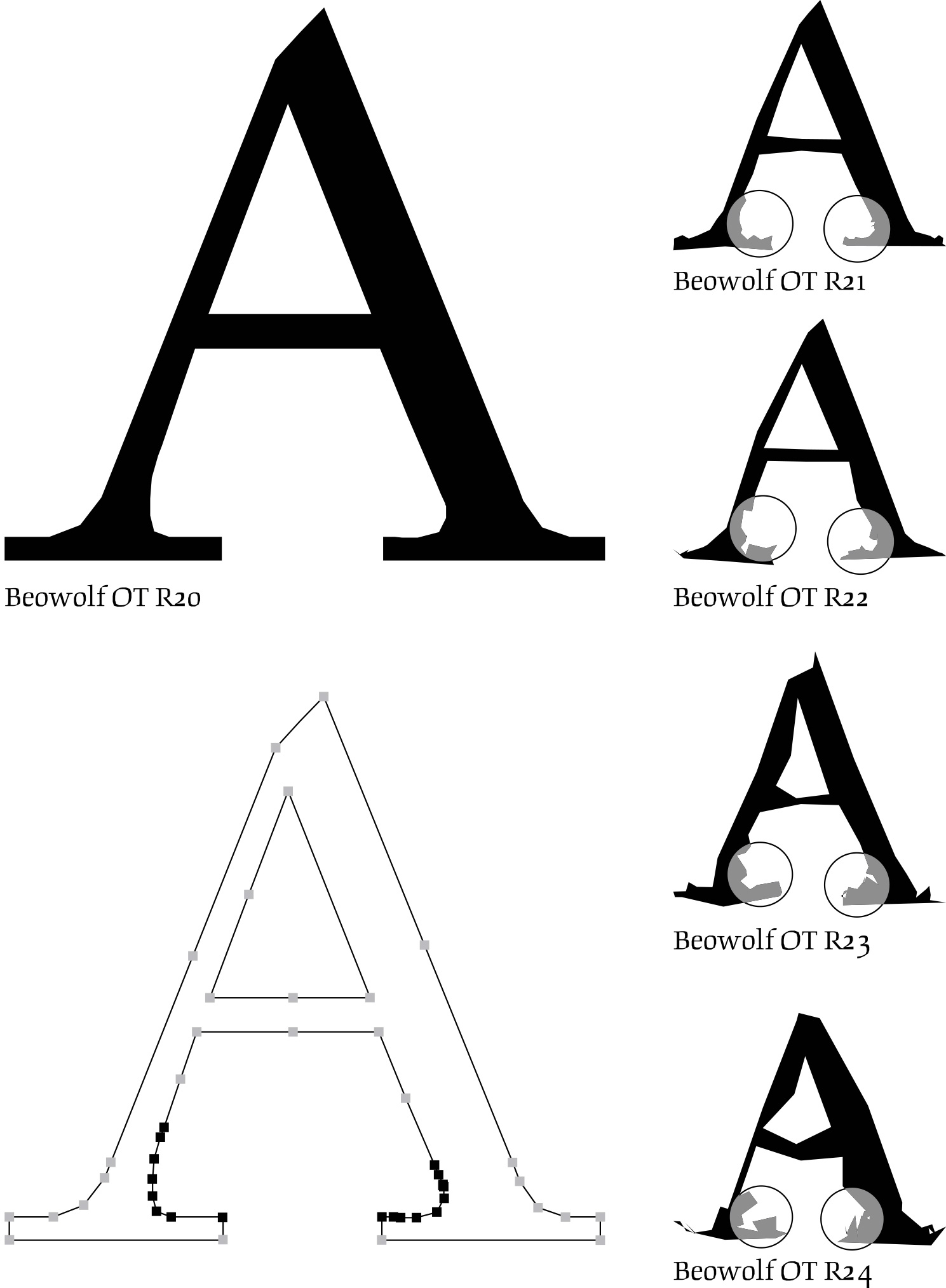Visuelle Kommunikation
Master
Kichang Kim
A to B – The Influence of Technology on Typeface Design from Phototypesetting to Digital Type



Letters are a tool. Letters are saying things to us all the time. Typography is the art of designing communication by using letters. It thus includes the design of books, magazines, newspapers, brochures, posters, advertisements, and websites. Typeface is an important element of typography. Whenever you look around, you can see typefaces. Various kinds of words and sentences that have been expressed in a variety of typefaces are everywhere. Additionally, technology has helped us use typefaces in many different ways. For those reasons, I shall focus on the influence of technology on typeface design. The relevance of the project results from the rapid technological development in the field of designing a typeface. Not only the typeface itself but also people’s awareness and dealing with fonts has changed its technological basis.
The most crucial aspect of this project is to discover the relationships among various typefaces that were made or invented from the mid-20th century till today. Typefaces have been changed by the technical development of their design, presentation, and production. Along with this, it also raises the question of today’s handling of typefaces, both in their design and use. The development of today’s trends is interesting, too. The goal is to find possible answers to these questions and reveal its potential more than now in the form of a book.
From phototypesetting to today’s state-of-the-art technologies, the development of typography has brought many changes to typeface design. The most crucial change is that type designers have started to make only one cut for each letter. Before that, each size of the typeface was individually cut. Small sizes have a thicker stroke, serif and a broad proportion of letters because of the limited possibilities of printing. Phototypesetting technology brought an important benefit to designing typefaces. A typeface now only had a single shape for different sizes and usages. It simplified the process of designing typefaces but type designers also have to address the balance of forms and the widths and proportions of a typeface to create a true masterpiece. Although type designers have brought various elements of typography to design typefaces, computerization also started to control micro typography.
Mechanizing and computerizing phototypesetting has an environmental impact on typeface design. The purpose of this project is to reveal the relationship between technology and typeface. Although a technological advance always seems better, there are always pros and cons.
I shall create images or comparisons of typefaces that we use in many different areas. Moreover, I shall try and capture the characteristics of the technical aspects I studied and then visualize them.
My experiments use three typefaces (Apollo, Haas Unica, Beowolf) and are essential for the project. Each typeface represents different periods of typesetting and techniques. I created my own categories without either following or deliberately rebelling against already existing ones. I have made analyses and created images that evoke some new ideas or directions for these typefaces to establish the main concept of my project, make it promising and imbue it with a certain potential.
Kichang Kim
jeff.kichang.kim@gmail.com, www.kikichi.ch
Institut Visuelle Kommunikation, FHNW HGK, Freilager-Platz 1, CH-4023 Basel
+41 61 228 41 11, info.vis_com.hgk@fhnw.ch, www.fhnw.ch/hgk/ivk



